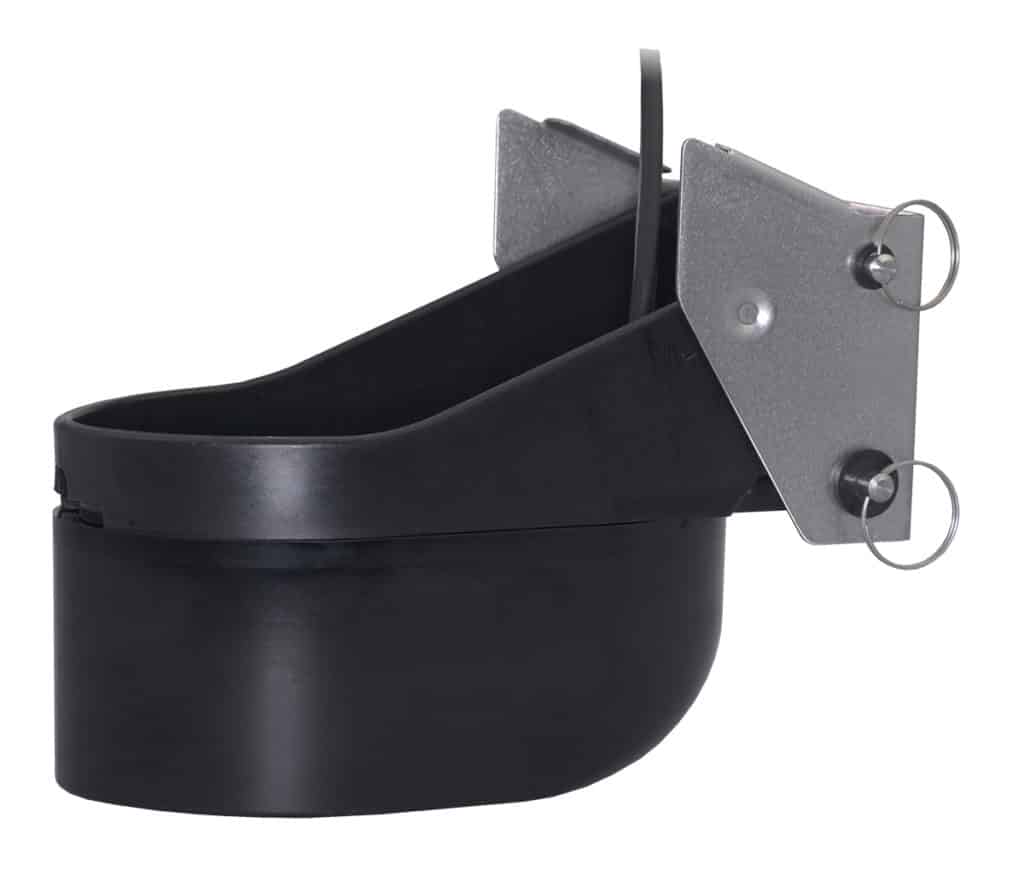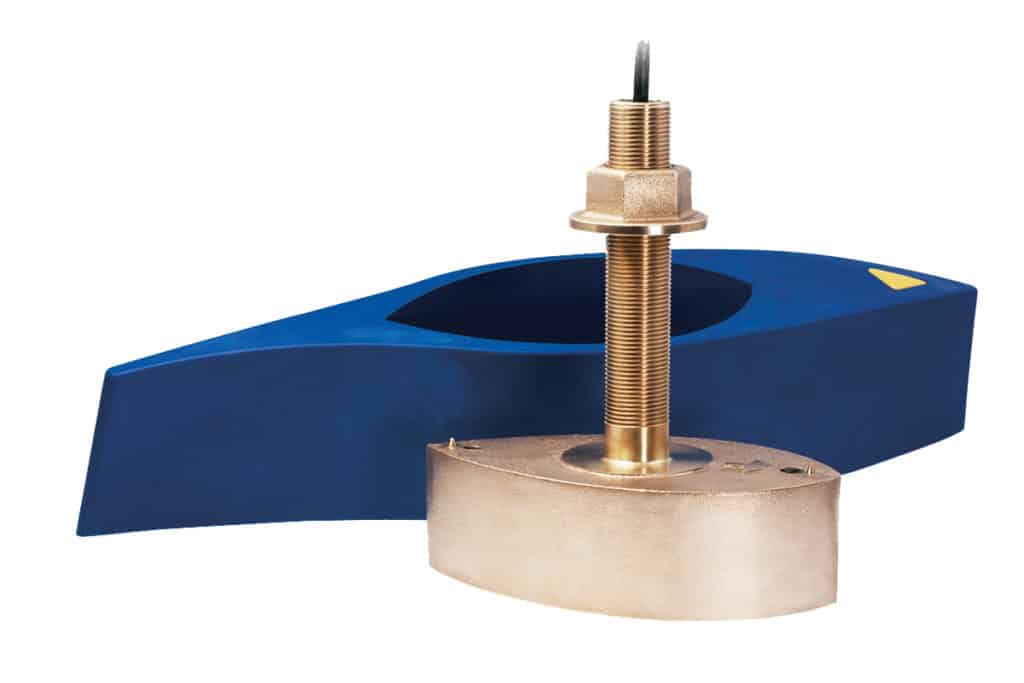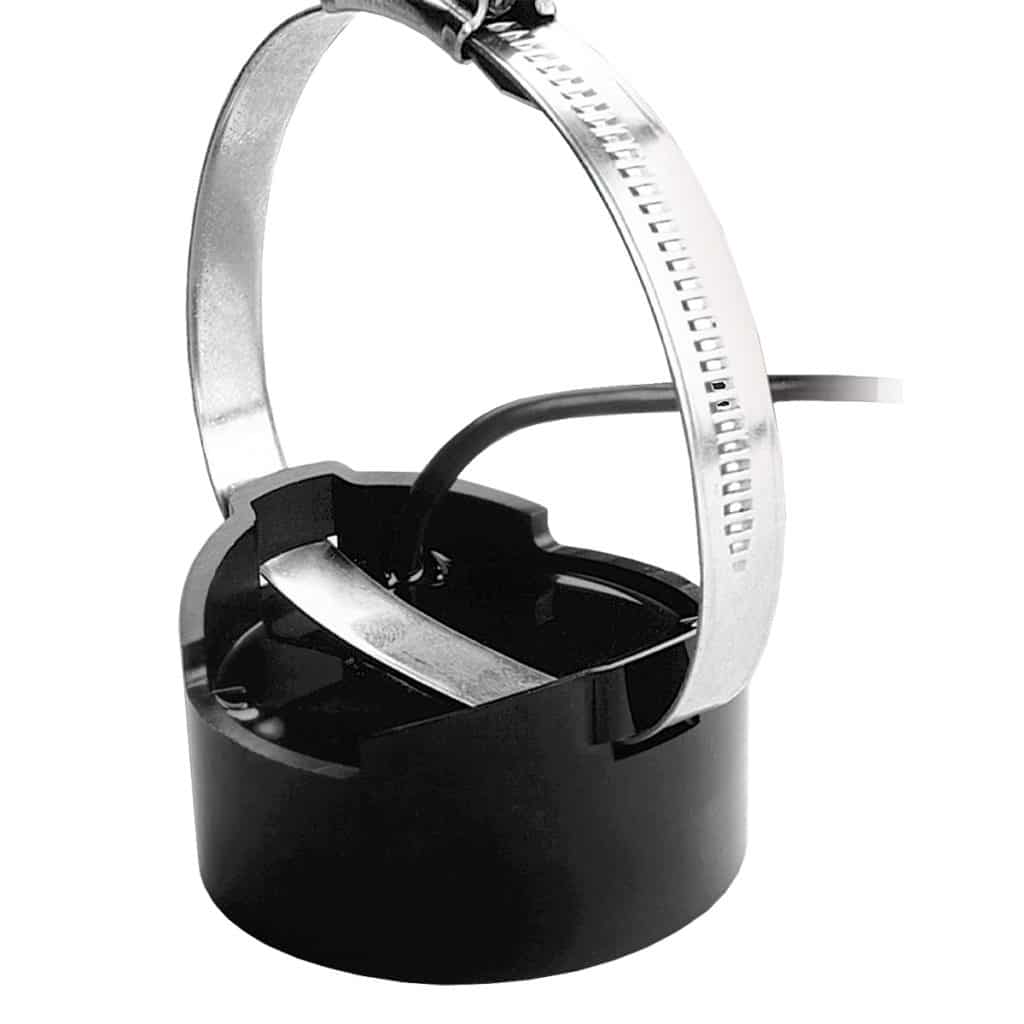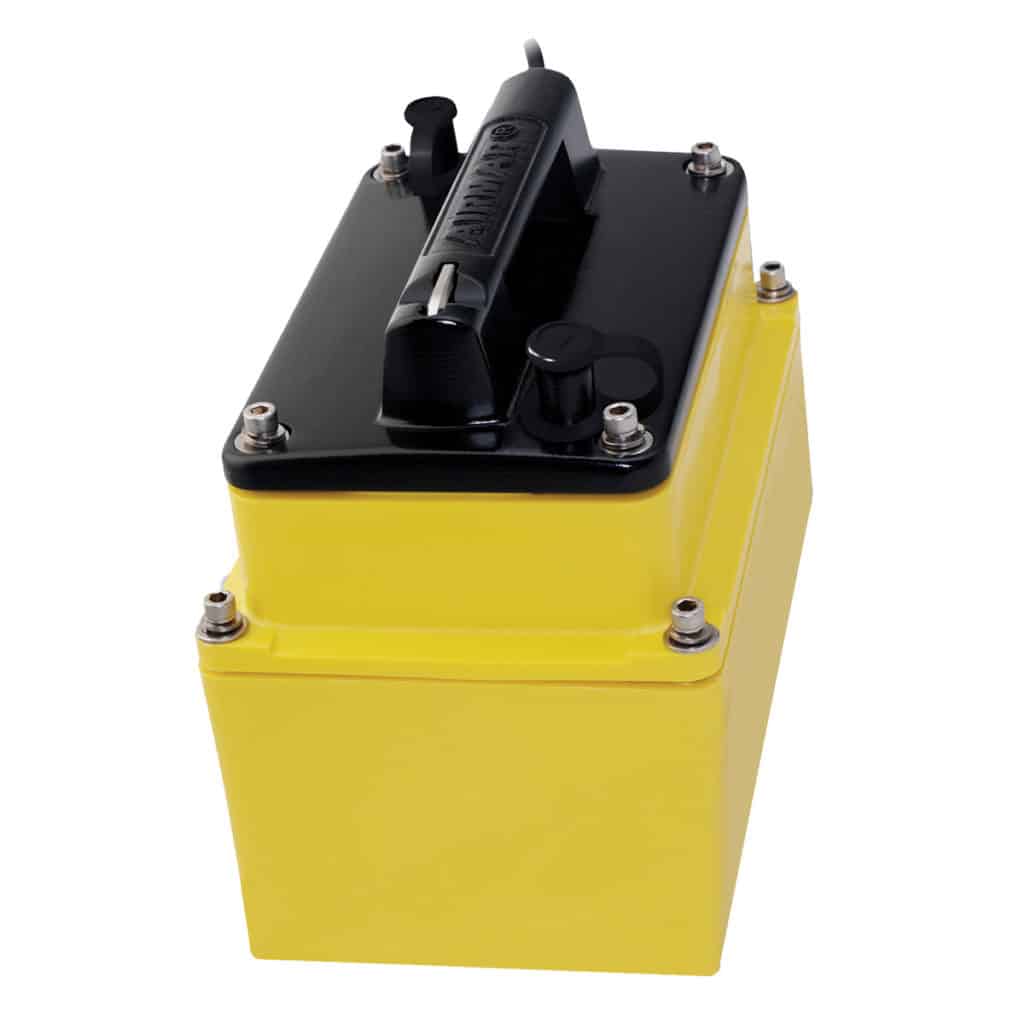
Screwing a transducer onto the transom is simple, maximizes transmit-and-receive sensitivity and, if mounted correctly, will allow your echo sounder to observe critical details of what lies below your vessel, even when underway. With power that goes up to 1 kW, transom mounts are well proven. Transom transducers won’t work on inboard boats, since the turbulence generated by rudders, shafts and props will flow over its surface, disrupting the signal.

Through-hull transducers are the typical solution for inboard craft. Installation requires cutting a hole in the hull and adding angled fairing blocks inside and outside the hull to account for the deadrise angle and ensure the transducer points straight down. Some boatbuilders mold-in recessed transducer pockets that protect the transducer from collision damage. The potential for such damage, as well as the possible difficulty trailering, are the downsides of through-hull transducers.

I have used in-hull puck mounts aboard many of my past boats and can say from firsthand experience they are easy to install and they work. Although pucks will lose some sensitivity when shooting through solid fiberglass hulls (just turn up the sounder’s gain control), they will usually give you a solid bottom reading at just about any speed. Installation requires a flat spot in the aft bilge near the keel, with the puck installed in a bubble-free puddle of epoxy resin. This method will not work in cored or foam-filled hulls since sonar signals don’t work through air in the coring.

A sea chest transducer is a sealed plastic box filled with mineral oil that is epoxied into the hull. I have used these in the past with excellent results. As with pucks, you will lose some signal sensitivity, since the transducer’s face is not in the water. Translated, the sounder’s depth limits and its ability to read thermoclines will be somewhat compromised. But higher-power outputs and multiple frequencies are reasons to choose a sea chest over a puck.
Whoever coined the phrase “different strokes for different folks” must have been thinking about which transducer to choose for their boat and where to put it. The choices are many and potentially confusing. To help smooth this decision process, I’ve summarized the pluses and minuses of four types of transducers.
Quick Tip: I installed a switch box aboard my 228 EdgeWater to provide the redundant convenience of using two transducers for one sounder.








